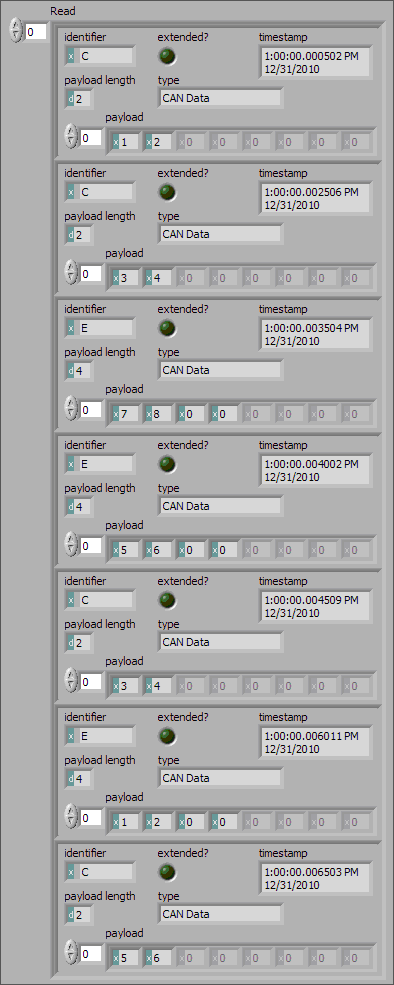Frame Input Stream Mode
- Updated2025-10-10
- 2 minute(s) read
A frame input stream session reads all frames received from the network using a single stream. It typically is used for analyzing or logging all frame traffic on the network.
The session returns input data as an array of frames. Because all frames are returned, your application must evaluate identification in each frame to interpret the frame payload data. Multiple frame input stream sessions can be open at the same time on a single interface.
Frame Input Stream Example
The example uses CAN, but the principle applies to all protocols.
In this example network, frame C is a cyclic frame that transmits on the network once every 2 ms. Frame E is an event-driven frame.
Each frame contains two signals: one signal in the first byte and another signal in the second byte.
The following figure shows a timeline of a frame transfer on the CAN network, followed by a single call to Read. Each frame contains its name (C or E), followed by the value of its two signals.
The following figure shows the data returned from Read:

Frame C and frame E are returned in a single array of frames. Each frame is displayed with CAN-specific elements. To understand the data returned from Read, refer to information on the format of raw frame data. This example uses hexadecimal C and E as the identifier of each frame. The signal data is contained in the first two payload bytes. The timestamp represents the absolute time when the interface received the frame (end of frame), accurate to microseconds.
Related Information
- Creating a Basic Program
At its most basic, allows you to read information from a network or to write information to a network. You can create complex applications with , but it is possible to create a basic, functional program with these elements alone.
- Frame Input Queued Mode
- Cyclic and Event Timing for Frames with
For all embedded network protocols that supports, the transmission of a specific frame can be either cyclic or event.
- CAN, FlexRay, and LIN
- Session Modes